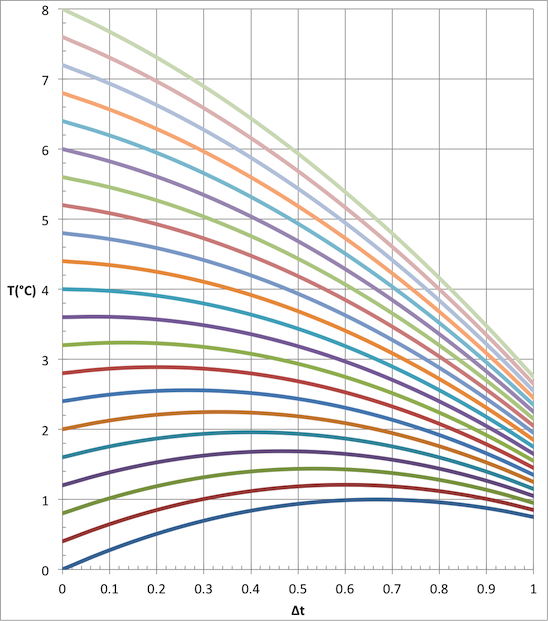Since the temperature equation above is a function of both time and temperature, I've calculated the temperature tendency for you. Namely, the slope of the lines at any point in the figure:
∂T/∂t = f(t, T) = 1.5 * { 2 – 1.5*t – [ T / (2 – 1.5*t) ] }
[Note: To get the eq above for f(t, T), I first solved the original temperature-field eq for Tref(T, t). Then I analytically found ∂T/∂t from the first equation above, and substituted in the expression for Tref. This takes advantage of the fact that Tref is constant along any of the curves in the fig below.]
.

.
Given the temperature-field and temperature-tendency info above, and given the initial condition below, apply finite difference methods (a) - (d) to predict the temperature after 1 full timestep ahead. Namely:
Please start from initial condition of T = 2 degC at m = 0, as we did in class, but compute using any programming language (excel, matlab, R, python, fortran, etc) the new T (degC) at 1 timestep (1∆t) ahead using:
a) Euler forward
b) RK2
c) RK3
d) RK4
e) Which one gave an answer closest to the actual analytical answer as given by the function above? [Note: do NOT use the 1-D model from the previous HW for this.]